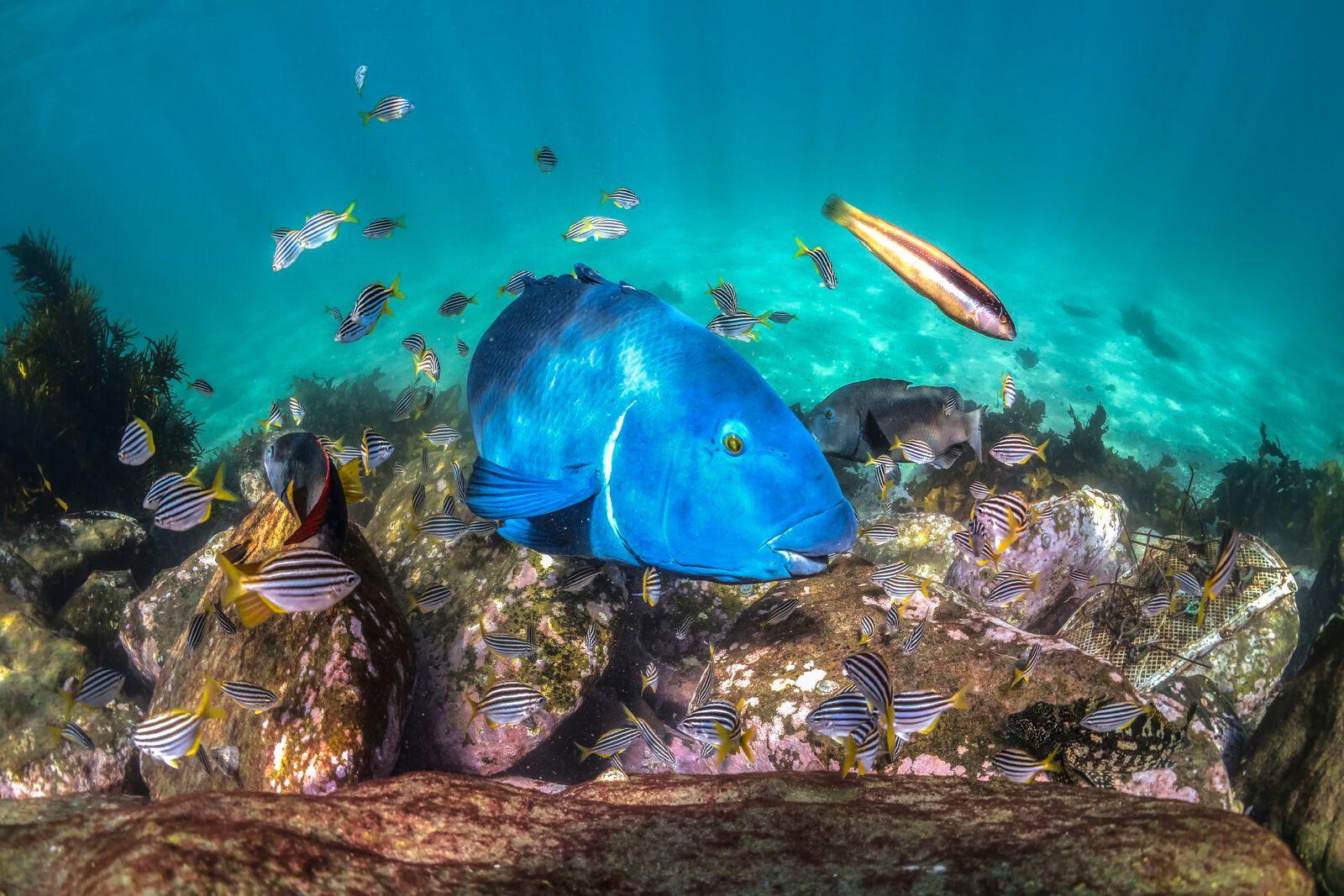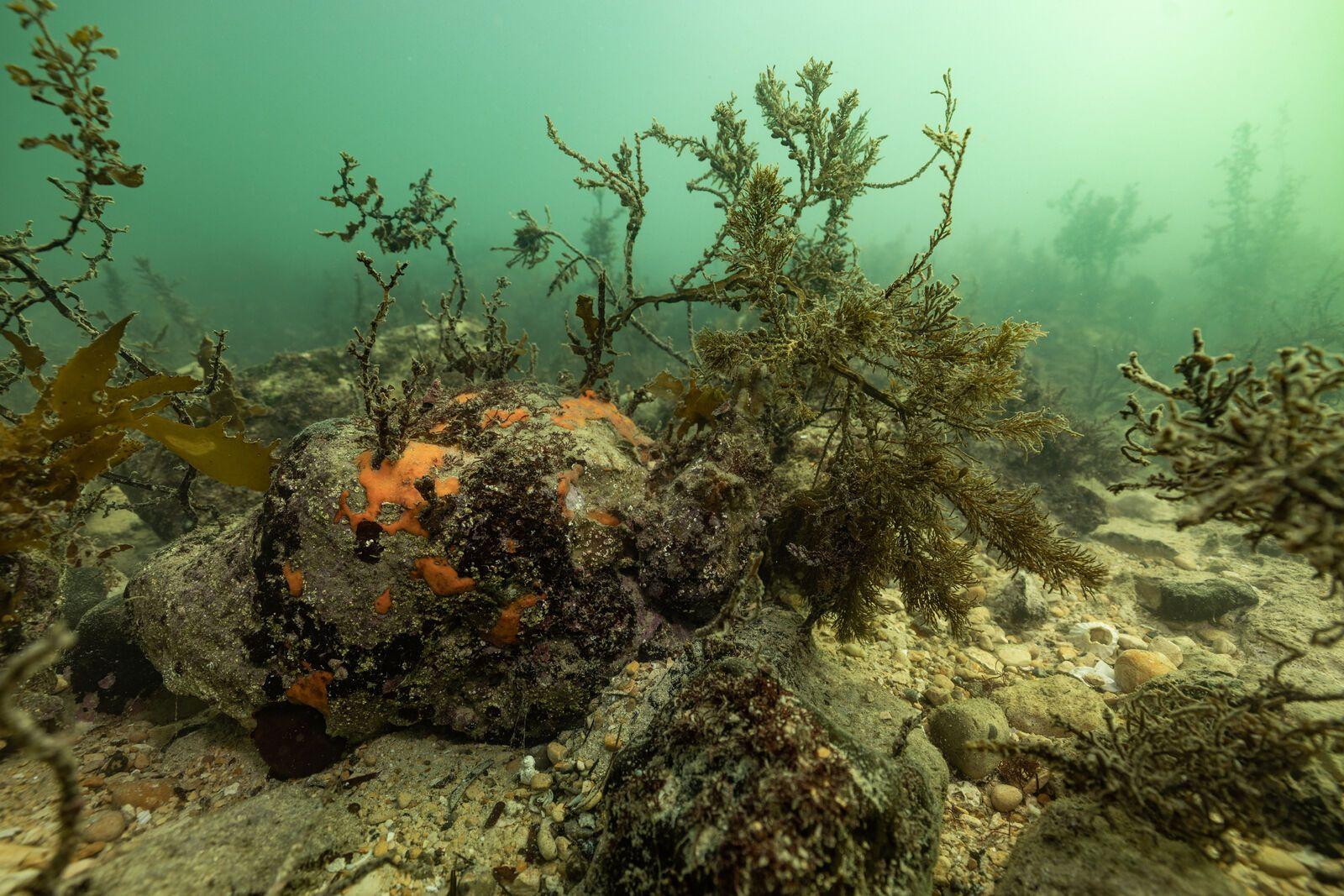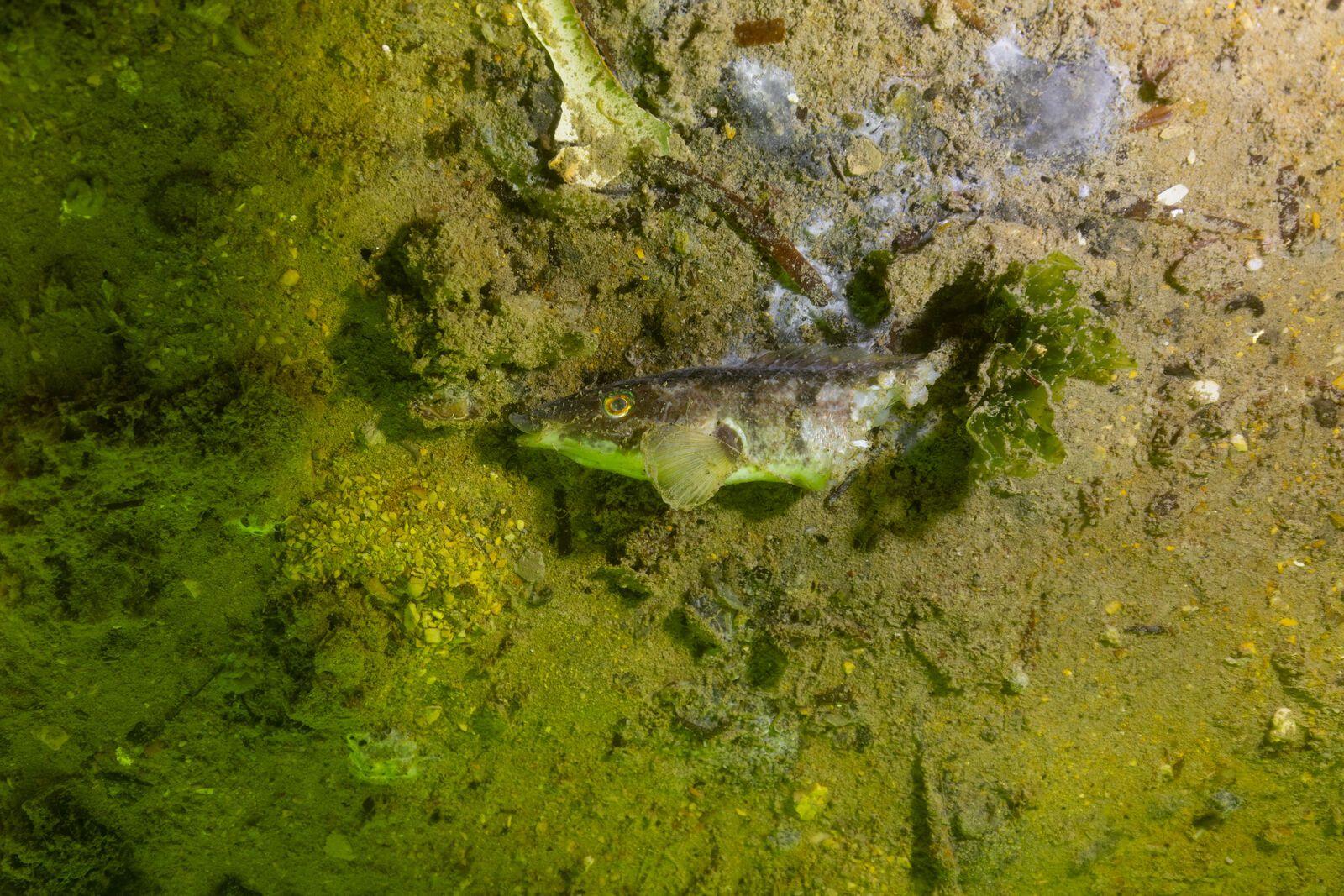The drivers of algal blooms in Australia: What causes algae to go from friend to foe?

Image: adapted from photos by Great Barrier Reef Foundation; left Scott Bennett, right Stefan Andrews.
News story
7 August 2025
You may not have thought much about algal blooms before, but the catastrophic impacts and scenes in South Australia have raised questions about algal blooms for many people.
To understand more about algal blooms and how to reduce the likelihood of harmful algal blooms, we spoke to Professor Perran Cook, from Monash University, who is an expert in nutrient cycling in aquatic environments.
We need algae
Firstly, our oceans are full of thousands of species of algae and most of the time, that is a very good thing.
According to Professor Cook, "Algae are basically everywhere in the ocean. Most of the time, you don't see them. But algae feed food webs, and underpin the diets of all the fish we eat and countless other marine creatures. The whole marine foodweb is basically derived from algal material."
Most of the time, the growth of these microscopic organisms is balanced by natural forces: they are eaten by grazers, like clams or the larvae of many creatures, or washed out of the system by currents and storms. However, when conditions favour faster growth than loss, algal blooms can occur.
Not all blooms are harmful, but some are toxic and can wreak havoc on marine life and ecosystems. We often don't notice algal blooms that are not toxic.

Algae feed food webs, underpinning the diets of countless marine creatures. Image: Gergo Rugli courtesy of Great Southern Reef Foundation.
What went wrong in South Australia?
This year, an unprecedented bloom of Karenia mikimotoi, a potentially toxic dinoflagellate, has devastated marine life in the Gulf St Vincent and parts of the Spencer Gulf. While the precise mix of conditions that triggered this bloom remains complex and unresolved, Cook says two main drivers are likely responsible: high temperatures and calm seas.
"The factor that has probably contributed to the South Australian algal bloom mostly is really warm conditions," says Cook. "So the ocean over this summer and autumn period has been about two and a half degrees above the long-term average, which has probably made this particular species of algae grow faster than they normally would."
Coupled with the heat has been a persistent stillness. "The ocean's been relatively calm," says Cook. "So that means there's very little exchange of water and mixing, which has allowed the algae to accumulate."
But the full picture includes nutrients. Algae need food. In South Australia, two key nutrient inputs may have primed the system in the lead-up to the bloom: floods and ocean upwelling.
"Two years ago, there were the Murray floods, which introduced a lot of water into the region where the bloom now is," says Cook. "The other source of nutrients in that area is periodic upwelling—where deeper ocean water, rich in nutrients, mixes with surface water."
Although the upwelling and floods happened some time before the bloom was first noticed in March, the extra nutrients may have lingered in the ecosystem. Nutrients can be taken up by algae and the food chain, then recycled back into the water when things die and so forth. The calm seas may have allowed more of these recycled nutrients to remain in place.
"Low rates of flushing because of the recent calm events may have contributed to more retention of nutrients in the system, which possibly contributed to the bloom. But I think that that's probably of secondary importance," he adds.

Algal bloom off the coast of Edithburgh, South Australia. Image: Stefan Andrews courtesy of Great Southern Reef Foundation.
The species causing a problem in South Australia is the toxin-producing species Karenia mikimotoi.
"Some species have a strategy to produce toxins, as part of their own survival strategy. And sometimes when the conditions are just right—or just wrong, depending on your perspective—those toxic species get an edge and then they take off," says Cook.
Why they bloom at a particular moment remains somewhat mysterious. "It's often a unique set of environmental conditions that sets those particular species off. And it often is just warm and still conditions—not always, but mostly."
What makes Karenia mikimotoi especially dangerous is not just its toxicity, but its adaptability. "The type of nitrogen or the type of nutrients that this species of algae likes is the sort that comes out of decaying fish and organic matter," Cook explains. "So you could potentially argue that by killing fish, they're actually feeding themselves."
It's a darkly efficient cycle. "These organisms are what's called mixotrophic. So mixotrophy is where they can actually eat organic matter in the same way as us, but they can also photosynthesise and produce the food they need just from sunlight."
In other words, Karenia mikimotoi can feed on the destruction it causes, while still pulling energy from the sun. It's a biological feedback loop that reinforces the bloom.
The end of South Australia's bloom will most likely be caused by rougher ocean conditions, storms and currents to dissipate the bloom and bring other ocean water into the gulfs, and cooler water conditions.

Toxins produced by certain species of algae can kill marine life, which provides more nutrients for the algae to feed. Image: Stefan Andrews courtesy of Great Southern Reef Foundation.
A riskier future ahead
Climate change will increase the risk of blooms in many ways, including not just warmer waters but also by increasing bushfires, which can lead to nutrient-rich ash being washed off catchments into estuaries and coastal regions.
"The 2020 fires, and also a fire in 2007, were known to have driven multiple algal blooms around the country."
One of the types of algal blooms that will be favoured by climate change is blue-green algal blooms, which can be toxic.
"Blue-green algal blooms, otherwise known as cyanobacterial blooms, typically occur under very warm conditions and also under very still conditions. These are the types of conditions that we expect to see more of around Australia under climate change," said Cook.
"In some systems, such as the Gippsland Lakes, nutrient inputs play a very strong role in those types of algal blooms. So we need to manage nutrient runoff from the catchment as much as possible, through improved farming, and better urban infrastructure."
"The most important action to limit blooms is to do our best to mitigate climate change. The warming world is going to lead to more algal blooms. I think that's fairly clear," says Cook. "And it's quite unpredictable about what form they take and where they occur."













